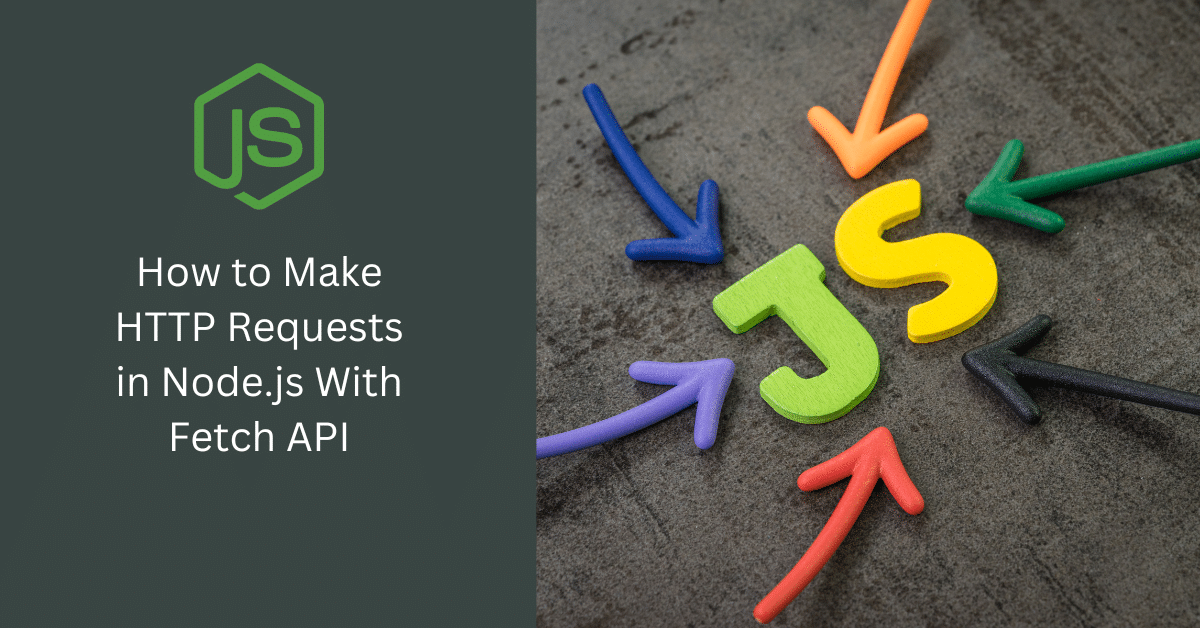
Node.js is a powerful and popular runtime environment that allows developers to run JavaScript code outside the browser. One of the common tasks in web development is making HTTP requests to interact with external APIs or fetch data from servers. In this article, we will explore how to make HTTP requests in Node.js using the Fetch API, a built-in feature that simplifies the process of sending and receiving data over the internet.

What is Node.js?
Node.js is an open-source, cross-platform JavaScript runtime built on Chrome’s V8 JavaScript engine. It allows developers to execute JavaScript code on the server-side, offering a range of features and modules to handle server-side operations. With Node.js, developers can build scalable and high-performance applications.
Understanding HTTP Requests
HTTP (Hypertext Transfer Protocol) is the foundation of data communication on the internet. It allows clients (e.g., web browsers) to request resources from servers and receive responses. HTTP requests come in different types, such as GET (retrieve data), POST (submit data), PUT (update data), DELETE (delete data), etc.
The Fetch API
The Fetch API is a modern JavaScript feature that simplifies making asynchronous network requests. It provides a global fetch() method that allows you to initiate HTTP requests and handle responses using Promises. Let’s explore how to use the Fetch API for various types of requests.
Making GET Requests
To make a GET request, you need to specify the URL you want to fetch data from. The fetch() function returns a Promise that resolves to the Response object.
Handling Responses
Once you have made the request and received the response, you can extract the data from the Response object. You can also handle different response statuses and errors.
Making POST Requests
Sending data to the server using POST requests is a common requirement. You can use the Fetch API to send data as JSON or URL-encoded data.
Error Handling
Handling errors properly is essential in any application. With the Fetch API, you can catch network-related errors and handle them gracefully.
Installing Dependencies
Before we proceed, make sure you have Node.js installed on your system. You can download it from the official Node.js website (https://nodejs.org/). The Fetch API comes bundled with Node.js, so there’s no need to install additional packages.
Creating a Node.js Project
To get started, create a new directory for your project and initialize it as a Node.js project using npm init.
Writing the HTTP Request Code
Now, let’s dive into writing the actual code to make HTTP requests using the Fetch API in Node.js.
Importing the Fetch API
Before using the Node, Fetch API, you need to require it in your Node.js application.
Making GET Requests
Use the fetch() function to make a GET request and retrieve data from a specific URL.
Handling Responses
Extract the required data from the response object returned by the fetch() function.
Making POST Requests
Send data to the server using the Fetch API with a POST request.
Error Handling
Implement error handling to deal with any issues that might arise during the request process.
Running the Node.js Application
Once the HTTP request code is ready, you can run your Node.js application and see the results of the HTTP requests.
Conclusion
In this article, we learned how to make HTTP requests in Node.js using the Fetch API. We explored various types of requests, including GET and POST, and saw how to handle responses and errors. Node.js, coupled with the Fetch API, provides a robust solution for interacting with APIs and fetching data from servers.





